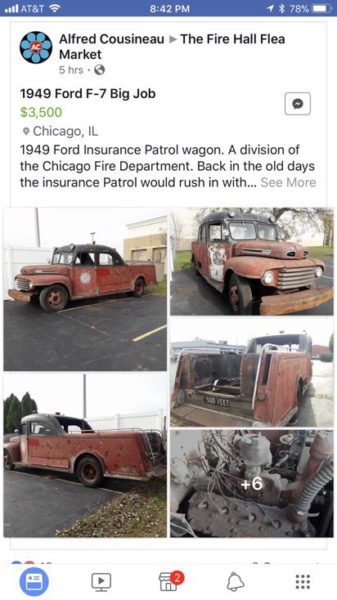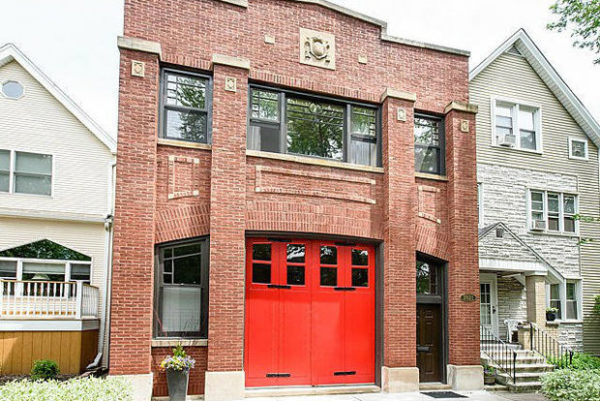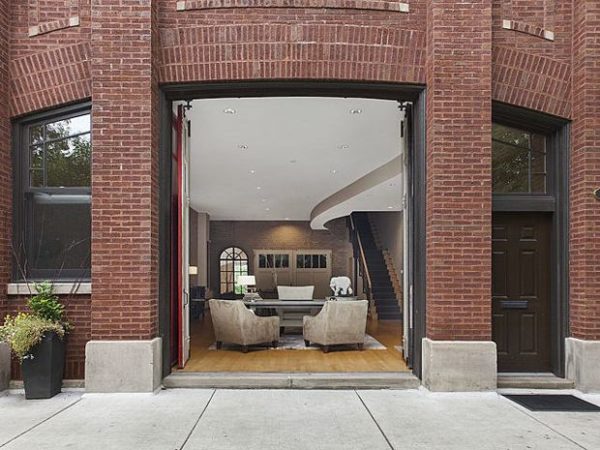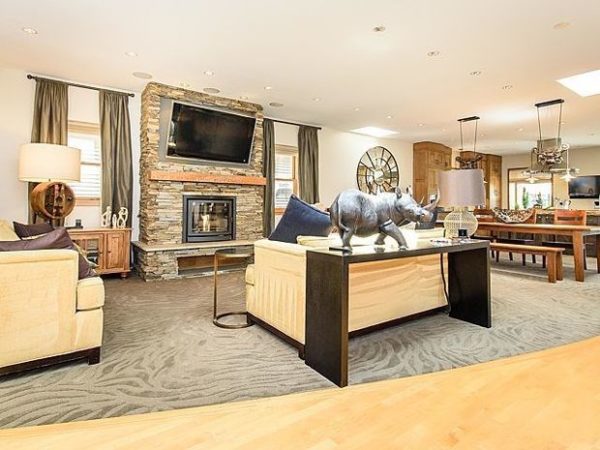From Phil Stenholm:
Another installment about History of Evanston Fire Department
Chief Lester Breitzman and the platoon commanders were equipped with Motorola HT-200 portable two-way radios in 1965. Because he now had a hand-held radio he could carry around the fireground, It was decided that the platoon commander no longer needed a driver / radio operator, so the firemen formerly assigned to drive F-2 were transferred to Squad 21, and became the squad’s fourth man each shift. When transmitting via handie-talkie, the chief used the radio call-sign “F-1-X,” and the platoon commander was “F-2-X.” Company officers were also eventually assigned handie-talkies, and were identified as “Engine 23-X,” “Squad 21-X,” “Truck 22-X,” etc, when operating on a portable radio.
Wayne Anderson became Evanston’s new city manager in 1963, and with Squad 21 back in front-line service and responding with four men to all fire calls, Bert Johnson’s Police-Fire Cooperative Plan was quietly phased out in 1965. However, the three police station-wagon patrol-ambulances remained in service and continued to respond to inhalator calls and ambulance runs, and while police officers were no longer expected to work as firefighters (except in extraordinary circumstances), police recruits did receive some training in basic firefighting.
The EFD added three new station wagons to the fleet in the years 1964-66, including a 1964 Plymouth station wagon (the new F-3) that was assigned to a Fire Prevention Bureau inspector during business hours and garaged at Fire Station # 5 at night and on weekends and holidays, a 1965 Dodge station wagon (F-5) assigned to the Training Officer at Station # 1, and a 1966 Ford station wagon (the new F-1) assigned to Chief Breitzman at Station # 2. All three of the station wagons were equipped with stretchers and first-aid kits and served as auxiliary ambulances, backing-up the three police station wagon patrol ambulances.
F-2 (the platoon commander’s 1963 Plymouth station wagon) no longer served as an auxiliary ambulance after the platoon commander’s driver was transferred to Squad 21 in 1965, but F-1 always had a driver, and (if in quarters) F-3 was staffed by Engine 25 personnel and F-5 was manned by the fourth man from Squad 21 or Truck 21 when needed. In addition, Squad 21 and station wagons F-1 and F-3 were equipped with a wooden back-board known in EFD parlance as a “fracture board,” and so Squad 21, F-1, or F-3 would be dispatched to any incident involving a significant back or neck injury.
Reserve Engine 26 (ex-E2 – 1927 Seagrave Standard 1000 / 50 TCP) – the EFD’s oldest rig – was taken out of service in 1965, and was converted to playground equipment by EFD mechanics. The conversion involved removing the engine, pump, transmission, drive-train, etc, and then welding everything shut, with sheet metal covering the under-carriage. Once the job was completed, the vintage pumper was installed in the middle of brand new Firemen’s Park at the southwest corner of Simpson & Maple. The previous spring, the EFD had used a vacant former church located on the site for ”live burn” practice drills.
In 1964, EFD Chief Breitzman requested that the city purchase a new “more useful” squad rig, and convert the existing 1952 Pirsch squad to a triple-combination pumper by replacing the squad body with a standard pumper body. The Pirsch squad had been in & out of front-line service over the course of its twelve years of service, and so it had relatively low mileage compared to the other 1952 Pirsch pumpers. Also, it had no hose bed, so the 1000 GPM pump had rarely been used and was in virtually pristine condition. Once converted to a TCP, the Pirsch rig would go into service as the new Engine 22.
The new squad would be equipped with an electric winch on the front bumper capable of pulling 18,000 pounds, a reconditioned auxiliary pump, a 300-gallon water tank, new extrication tools, and a top-mounted deluge nozzle salvaged from the recently decommissioned high pressure / hose truck. Modern precision quartz lights would replace the military-style “night sun” searchlights that were on the Pirsch squad. Most importantly, the new squad would have a hose bed with room for two 250-foot leads of 1-1/2 inch hose pre-connected to two rear discharge ports that could be used for a rapid fire attack.
A new factory-built Pirsch pumper-squad purchased by Skokie in 1965 cost $25,000, so City Manager Anderson was looking for a “creative” (cheaper) alternative. The City of Evanston purchased four new garbage trucks in 1965 — International-Harvester R-190 cab & chassis with a Leach Packmaster body — giving Anderson the idea to add an additional cab & chassis to the garbage truck order, purchase a custom-built squad body, a winch, an auxiliary pump, a water tank, and a quartz lighting system separately, and then have EFD mechanics piece it all together in the repair shop at Station # 1.
The city council thought it was a swell plan, and appropriated $13,000 for the project. The International cab & chassis ended up costing $4,474, the auxiliary pump, tank, plumbing, quartz lights, and fabrication and installation of the squad body combined cost $4,974, and the Braden winch cost $725. The pumper body for the 1952 Pirsch squad cost $4,000. EFD mechanics were able to install the winch, pump, tank, and plumbing on the new squad without difficulty, but the squad body was fabricated and installed by the General Body Co.
Located at 5838 N. Pulaski Road in Chicago, General Body was best-known for fabricating the world-famous Oscar Mayer Wienermobile, but GBC also built many other unusual commercial vehicles, including the Autocar squads used by the Chicago Fire Department, and the salvage trucks used by the Chicago Fire Insurance Patrol. GBC had previously built a squad for the Niles Fire Department by combining a commercial (GMC) cab & chassis with one of its own fabricated squad bodies, and the body on the Niles squad was the one Evanston wanted GBC to duplicate (albeit with a few modifications).
Fabrication and installation was completed by GBC within four months, and the new Squad 21 went into service in April 1966. Although it was sometimes called the “garbage truck” (for obvious reasons), and firefighters riding on the tailboard were sometimes called “garbagemen,” Squad 21 was the busiest company in the Evanston Fire Department — the SS-1 of the EFD — responding to inhalator calls, minor fires, and miscellaneous details in Station # 1’s district, as well as to all fires and rescue-extrication calls city-wide. The crew assigned to Squad 21 also manned the DUKW amphibious vehicle (F-7) whenever it was needed.
Converted to a 1000 / 100 TCP, the former Squad 21 went back into service as the new Engine 22 in August 1966, replacing the 1949 Seagrave 1000 / 80 TCP, which was then placed into reserve at Station # 5 as Engine 26. The Pirsch pumper’s hose-bed featured two 250-foot leads of 1-1/2 inch hose pre-connected to the two rear discharge ports, as well as 1,500 feet of 2-1/2 inch hose and 300 feet of three-inch hose. A section of soft-sleeve suction hose was pre-connected to an intake port above the rear step. It was the first EFD pumper to not carry lengths of hard suction hose.
Both the new Squad 21 and Engine 22 featured the EFD repair shop’s generic military style graphics of the day (black tape with “EVANSTON” in gold) affixed to the sides of the hoods, the same style of graphics that were applied to EFD station wagons and the DUKW 1964-1971. Squad 21 and Engine 22 also had custom designed gold shields with black lettering affixed on the cab doors, replaced by black shields with gold lettering in 1970. Also, the Mars FL-8 and DX-40 (“football”) warning lights on the older front-line engines and trucks were replaced with the more-visible white / red beacon-type emergency lights at about this same time.
Reserve Engine 28 (ex-E24 – 1937 Seagrave 750 / 80 TCP) at Station # 4 did not pass its annual pump test in 1966, and the other reserve 1937 Seagrave 750 / 80 TCP (Engine 27 at Station # 3) had a blown engine, so once the rebuilt Pirsch TCP went into service at Station # 2 and the 1949 Seagrave pumper was placed into reserve at Station # 5, EFD mechanics transplanted the motor from Engine 28 into Engine 27 to keep it running for a while longer. Engine 28 was then dismantled for spare parts and scrapped.







































